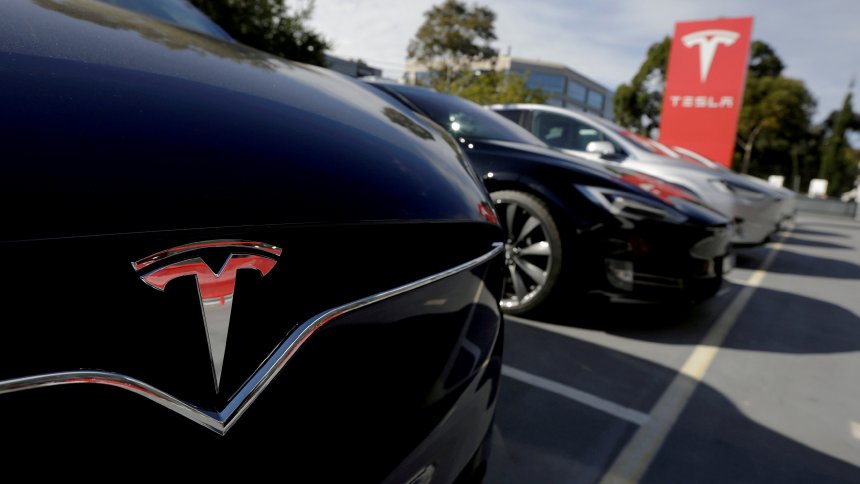Recently, Daimler battered an electric car from Tesla during intensive tests. “Tear down” is the name of such analyzes in jargon. They are common in the industry – but are actually different.
Tesla Model X (icon image)
Monday, 04.12.2017
19:26 clock
“There’s nothing going on, why can not he and we not?” So snorted Martin Winterkorn in 2011 – when he was still VW CEO – at the IAA in Frankfurt, as he tried out the steering wheel adjustment in a Hyundai i30. Winterkorn’s grumpy appearance became a YouTube hit.
One can be sure that shortly thereafter a Hyundai i30 was in the Wolfsburg VW plant and especially the steering wheel adjustment was disassembled to the last screw.
Recently, a similar case caused a stir: Daimler-Benz had procured a vehicle of the electric car competitor Tesla and put it to the acid test. Why not? The approach is completely normal in the auto industry: manufacturers get competing products to find out how they are designed.
It is also normal that cars for such a “product tear down” are usually purchased. However, Daimler did not do that a few months ago, but borrowed instead an electric car of the type Tesla Model X at the car rental Sixt, After seven weeks, the car went back to the lender – pretty battered. Obviously, the vehicle was once completely disassembled and martyred on test tracks. The SPIEGEL then asked, the company said, they would not comment on individual vehicle rentals.
Strange behavior of Daimler
If one listens to the industry, everyone shakes their heads about the at least strange Daimler behavior. The fact that rental cars are disassembled, is apparently very unusual.
“The fact that cars are meticulously examined by competing companies is nothing new in itself,” says Stefan Bratzel, Professor of Automotive Economics at the Bergisch Gladbach University of Applied Sciences. Also, that the findings from the competition observation in your own product reflected later, quite well. In the past, Japanese manufacturers were sometimes reviled for the most extreme form of observation, the so-called re-design.
The fact that it makes sense and important to know competitors’ products as accurately as possible has meanwhile been recognized by all manufacturers. “This type of knowledge sharing is even more important,” says Bratzel. “That is why among the German manufacturers cars are often exchanged for this purpose, which is partly already almost institutionalized.”
A BMW spokesman confirms this: “In such exchange stories much is clarified on the short service route.” VW Golf against Opel Astra, BMW 5 Series against Audi A6 or Mercedes SLK against Porsche Boxster – something like that can be imagined when the test car exchange carousel turns.
Material test under the electron microscope
According to information from various manufacturers, the following picture emerges: Yes, cars are exchanged for test purposes – but in individual cases it always comes down to a “good relationship of trust”. Where the affection is not so great, the companies buy the cars that interest them; And with exactly the motorization and equipment, which should be taken under the microscope. Then it does not matter how hard these cars are on test tracks, how long they are parked in cold chambers or if they are totally disassembled.
“Sometimes individual sheet metal parts even come under a scanning electron microscope to analyze the material accurately,” says an employee of a large German manufacturer who wants to remain anonymous.
Individual sheet metal qualities, the construction of wheel suspensions, the material in the dashboard – all these little secrets of each manufacturer are, once you have the product in hand, easy to find out. It gets more difficult when it comes to electronics. “What programs run on the processors, this knowledge can not be approached from the outside,” says an industry insider.
Rental cars are used, for example, in design comparisons
In fact, rental cars are also sometimes used: If the cars needed for the “competitive assessment” are no longer used as usual in rental cars anyway, then the manufacturers certainly also make use of the offer of car rental companies. “For example, for acoustic tests or events for sales people, so that they get to know the competition models,” says a company spokesman. Rental vehicles are also used in so-called car clinics: for example, when an automaker wants to use a group of test persons to determine how the design of a new model is assessed in comparison to its direct competitors.
Because the interest in such competitive comparisons is great, there are now even special companies that offer test cars for research and development. Such as the company Arndt Automotive from Neuss, which advertises on its website, it is specialized on “the individual branch requirements”. This includes, you read on, including vehicles for endurance tests, product comparisons or market research.
“Ultimately,” says car expert Bratzel, “the customer benefits from the lively exchange of competitors, because it increases the likelihood that the new generation of vehicles will actually be a little better than the previous one.”

